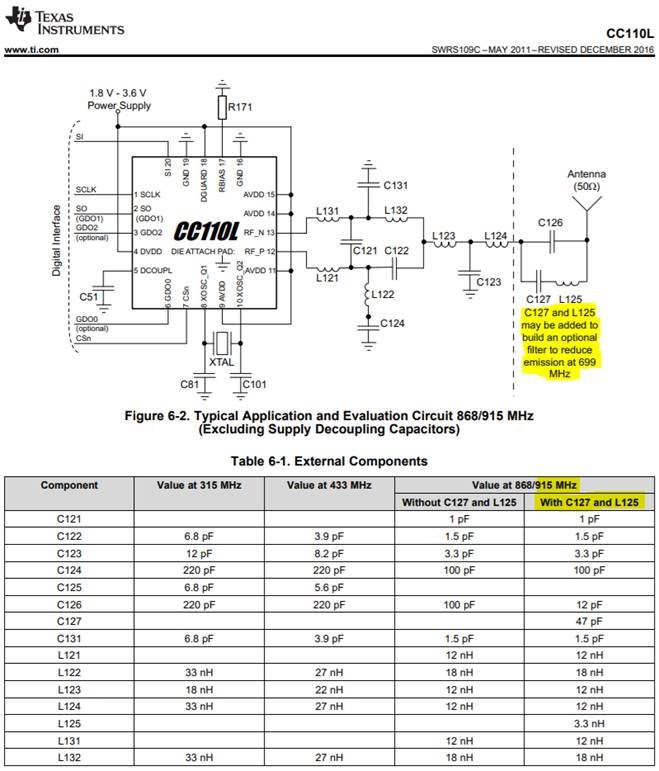Other Parts Discussed in Thread: CC1101
Team,
Could you please help with the 4 questions below?
1) Antenna matching:
Can you please confirm that the antenna matching network shown at page 81 of the CC110L datasheet is correct (schematics and RLC values) for 915Mhz operation?
I see the same network (without the optional filter) used on the CC110LEM-868-915-RD so I assume that the datasheet it is correct.
2) Crystal specification:
For 915Mhz can you please confirm that a 27Mhz crystal need to be used?
3) CC110L EM PCB design:
-Was the PCB validated for both 868 and 915Mhz?
-Were both 26Mhz (for 868 Mhz) and 27Mhz (for 915Mhz) crystals used for validation?
-Do you have some recommendation for modification in order to add the optional filter shown at page 81 of the datasheet?
4) CC-ANTENNA-DK-RD antenna kit:
Can the 868/915Mhz PCB antenna designs from the CC-ANTENNA-DK-RD be used as is for CC110L at 915Mhz?
Thanks in advance!
A.


